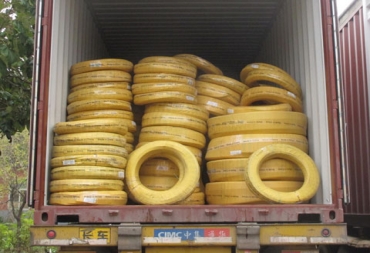How to Select the Right Industrial Hose and Fittings for Your Application
2022-08-18 16:04:45
Industrial hose can be used for many different applications and processes. However, its main benefit is its rugged nature. There are many types of industrial hose, each with its own fittings and rated pressures. Most industrial hoses are prefabricated, with the necessary lengths, ratings, and types of fittings. This ensures that the hose fits the application and can be customized to the required pressure and length.
Industrial Hose
The growth of the global industrial hose market can be attributed to the rapidly rising infrastructure related developments. This is causing a rise in private sector participation in infrastructure projects. This in turn creates a demand to industrial hoses. According to United Nations data for 2019, the world's population was around 7.6 billion in 2018. However, this figure is expected to rise to 9.8 billion by 2050 according to United Nations data. Urban areas will account for almost twice the population.
There are many types of industrial hoses, but there are important things to remember when choosing the right one for you. First and foremost, the sizing is critical. The size of the hose depends on the amount of pressure it will transmit. If it is too large or too small, it will restrict the flow. It is also critical to know the minimum bend radius to avoid catastrophic failure of the assembly. This can be achieved by reading sizing specifications carefully and determining the necessary dimensions.
Industrial hoses are available in various types, such as silicone hoses, polyvinyl chloride slack flex, and rubber. These hoses are resistant to high pressure, high temperatures, and corrosive chemicals. Industrial hoses enable the safe transfer of virtually any type of material. Without properly installed and designed industrial hoses, many daily industrial processes would not be possible. Listed below are a few factors to consider when choosing industrial hoses.
Industrial Hose Manufacturers
At a CAGR rate of %, the market for Industrial Hoses will reach Million USD by 2025. This report uses the base year 2018 and the forecast period 2019. The key players in the market are Gates Industrial Corporation plc, Eaton Corporation plc, Parker-Hannifin Corporation, Ryco Hydraulics, Kuriyama of America, Inc., Kurt Manufacturing, Colex International, and NORRES.
There are three main types of industrial hoses: air and dust handling, chemicals, or water. This is used for applications involving hazardous substances. The type of media to be transferred determines the type of end connectors and pressures needed. Some manufacturers have more than one type of hose to meet customer specifications. They also stock a variety of industrial supplies, such as tools, fittings, and industrial supplies. There are many styles and sizes of industrial hoses.
The pressure rating of a hose refers to its ability resist the force it must transfer. It is generally measured in pounds per square inch (Psi). It should meet or exceed the operating pressure of a system, including ambient temperature. The hose should not be operated outside its rated range. This could result in a decrease in its service life and a decrease in performance. It is also important to consider the type of media that the hose will be carrying. Different fluids have different effects on temperature. Some manufacturers provide different temperature ratings for different fluids.
Industrial Hose Fittings
The wrong industrial hose fitting can have disastrous consequences. A wrong choice can lead to system breakdowns and leaks, and can even lead to complete failure of the entire hydraulic system. Failure of industrial hoses can also pose serious safety risks. It is important to be familiar with the various types of industrial hoses on the market and to choose the right one for your application. Here are some tips to help you choose the right industrial fittings and hoses for your application.
The end connection to an industrial hose is the industrial hose fitting. They come in a variety of styles and materials. The most common are Cam and Groove style couplings. These are commonly used for loading and offloading facilities. Other fittings include brass, plastic, and steel. The working pressures, vacuum and environment will determine the best fitting. There are many sizes of industrial hose fittings to suit almost any application.
KC nipples can be used as flexible hose fittings. They allow you to change from the end of a hose into a male NPT thread. They allow for two fittings to be connected at each end. KC nipples can be used in low-pressure applications. The KC nipple is also suitable for use in the food and beverages industry. A hose that has been proven safe and tested in low-pressure environments is a good choice.